Step into a world where gods and demons roam, mythical creatures come to life, and heroic tales unfold. Prepare to embark on a journey through the captivating legends of Japanese mythology, a rich tapestry of folklore and ancient beliefs that continue to enchant and inspire. From the creation myth of Izanagi and Izanami to the epic battles of heroic figures like Susanoo and Yamato Takeru, this article will delve into the awe-inspiring stories that have shaped Japanese culture for centuries. Discover the supernatural beings known as yōkai and the tragic romances of Princess Kaguya and Prince Genji. Uncover the influence of Buddhism on Japanese mythology and explore the enduring presence of these legends in popular culture. Join us as we unravel the mysteries and immerse ourselves in the world of Japanese mythology.
Contents
- The Creation Myth
- Legendary Creatures
- Yōkai: The Mysterious Spirits
- Heroes and Heroines
- The Tale of Genji
- Beliefs and Rituals
- Japanese Mythology in Popular Culture
- Conclusion
-
Frequently Asked Questions
- 1. What is the significance of the creation myth in Japanese mythology?
- 2. Who are Izanagi and Izanami?
- 3. What happened during Izanagi’s journey to the underworld?
- 4. Can you explain the concept of yin and yang in Japanese mythology?
- 5. What are yōkai in Japanese mythology?
- 6. Who is Susanoo and what is his significance?
- 7. What is the story of Princess Kaguya and the Moon?
- 8. How did Buddhism influence Japanese mythology?
- 9. What role do mythical creatures like kitsune and kappa play in Japanese mythology?
- 10. How are Japanese mythological themes represented in popular culture today?
- References
-
Frequently Asked Questions
- 1. Who were Izanagi and Izanami?
- 2. What is the significance of Amaterasu and Susanoo?
- 3. What are Kitsune and why are they fascinating?
- 4. Can you tell me more about Kappa and their origins?
- 5. What is the story behind Tengu, the winged goblins?
- 6. What are Oni and what role do they play in Japanese mythology?
- 7. Tell me more about Nekomata, the supernatural cats.
- 8. Who is Jorōgumo and what is her significance in Japanese mythology?
- 9. What is the story behind Susanoo battling Orochi?
- 10. Who is Prince Genji and why is his tale significant?
- References
- Read More
The Creation Myth
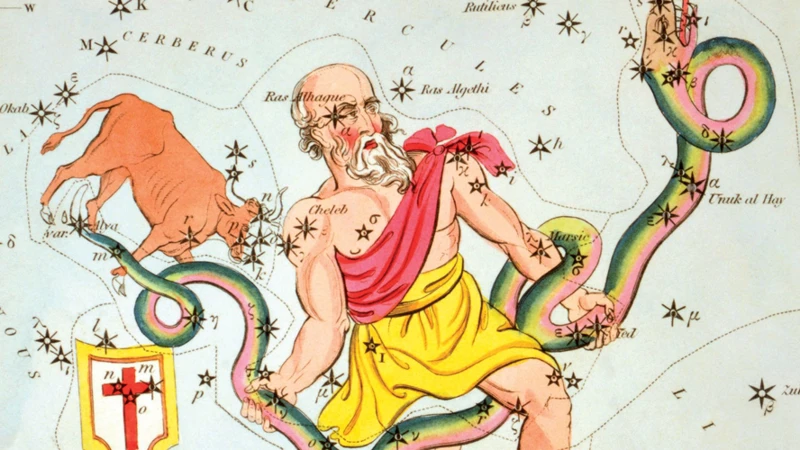
In the mythological origins of Japan, the creation myth plays a fundamental role, setting the stage for the birth of the deities and the formation of the world. At the heart of this myth are the divine siblings Izanagi and Izanami, who were given the task of creating the land. According to legend, they dipped a jeweled spear into the primordial sea, and as they lifted it, the water that dripped off the spear formed the first island, Onogoro. The divine couple then descended onto the island and performed a sacred ritual, walking around a pillar in opposite directions. As they met at the other side, the goddess Izanami spoke first, proclaiming their union and the birth of numerous deities. However, tragedy befell them as their final child, the fire deity Kagutsuchi, burned Izanami to death. In sorrow and anger, Izanagi killed his son and journeyed to the underworld, where he hoped to bring Izanami back. But upon seeing Izanami’s rotting corpse, he fled in terror and sealed the entrance to the underworld. This myth of creation and death illustrates both the origin of the world and the duality that exists within it, echoing the cyclical nature of life and symbolizing the delicate balance between creation and destruction.
Izanagi and Izanami
Izanagi and Izanami, the divine siblings of Japanese mythology, are central figures in the creation myth. Tasked with bringing forth the land, they embarked on a sacred ritual that involved circling a pillar in opposite directions. This union resulted in the birth of numerous deities, symbolizing the emergence of the divine realm. However, tragedy struck as Izanami, while giving birth to the fire deity Kagutsuchi, was consumed by the flames and perished. Izanagi, devastated by the loss of his beloved sister-wife, ventured into the underworld in an attempt to retrieve her. This fateful journey, however, led him to witness the decay of Izanami’s corpse, causing him to flee in terror and sealing the entrance to the realm of the dead. The story of Izanagi and Izanami showcases the interplay between creation and destruction, love and loss, and the transcendent power of divine beings.
Amaterasu and Susanoo
Amaterasu, the radiant goddess of the sun, and Susanoo, the tempestuous god of storms, are central figures in Japanese mythology. As siblings, their relationship is marked by both love and conflict. According to the myth, Susanoo’s unruly behavior and jealousy towards his sister led to a series of calamities. One of the most well-known tales recounts Susanoo’s destructive rampage through the heavenly realms. In his rage, he flung a flayed horse into Amaterasu’s weaving hall, killing one of her attendants. Outraged by his actions, Amaterasu retreated into a cave, plunging the world into darkness. With the other gods’ efforts to bring her out in vain, they eventually devised a plan. A divine procession, highlighted by the goddess Ame-no-Uzume’s dance, lured Amaterasu out of the cave, and the world was illuminated once more. The reconciliation of Amaterasu and Susanoo symbolizes the restoration of order and the harmony between light and darkness, bringing balance back to the world. This tale highlights the complex dynamics between deities in Japanese mythology and sheds light on the significance of Amaterasu as the sun goddess and the bringer of light.
Legendary Creatures
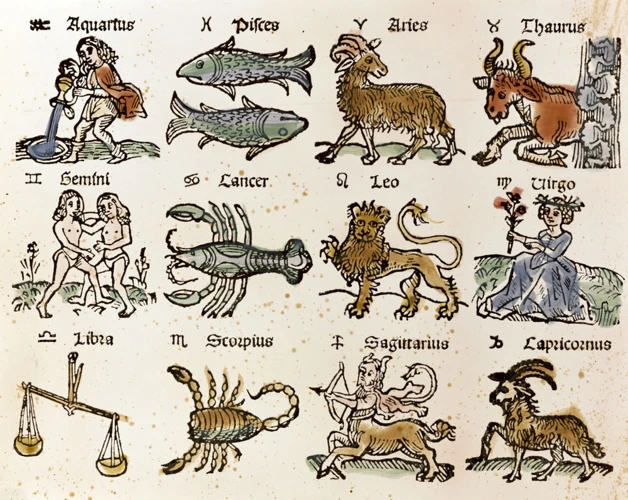
Within Japanese mythology, a diverse array of legendary creatures captures the imagination and adds an element of wonder to the folklore. One such creature is the Kitsune, a mythical fox known for its intelligence and shape-shifting abilities . These mischievous creatures are often portrayed as helpers, tricksters, or even seductresses. They can possess humans, take on human form, and possess various magical powers. Another intriguing creature is the Kappa, a water imp that inhabits rivers and lakes. These mischievous beings are said to have a dish-like depression on the top of their heads that holds water, giving them strength and power. Kappa are known for their love of cucumbers and can be appeased by offering them this vegetable. Lastly, the Tengu are winged goblins considered both demons and protectors of the mountains. They are depicted with long noses and are skilled warriors who possess amazing swordsmanship. These legendary creatures continue to captivate the imagination and serve as important cultural symbols in Japan.
Kitsune: The Mythical Fox
In the realm of Japanese folklore, the Kitsune reigns as a mythical creature with a shape-shifting ability and extraordinary intelligence. Known as the “mythical fox,” Kitsune is depicted as a mischievous and cunning creature, often taking the form of a beautiful woman, a majestic fox, or even an everyday object such as a tea kettle. Legends suggest that Kitsune possess magical powers, including the ability to bring good fortune, grant wishes, and deceive humans. With a reputation for being both enchanting and unpredictable, these mythical foxes have become a prevalent figure in Japanese literature, art, and even modern pop culture. Their captivating presence can be found in tales of love, trickery, and adventure, making Kitsune a beloved and intriguing character in Japanese mythology.
Kappa: The Water Imps
Kappa, the water imps of Japanese mythology, have long been feared and revered for their mischievous and sometimes malevolent nature. These aquatic creatures are said to inhabit rivers, lakes, and ponds, often taking the form of humanoid turtles with scaly skin and a beak-like mouth. With a natural affinity for water, kappa are expert swimmers and are known to possess a water-filled hollow on the top of their heads, which is both the source of their strength and their vulnerability. Legend has it that if the water in a kappa’s hollow spills out, it will lose its power and become incapacitated. Kappa are notorious for their pranks and tricks, from pulling unsuspecting victims underwater to stealing crops from nearby fields. However, they are also believed to possess a mischievous sense of honor and a fascination with human customs and etiquette. It is said that if one encounters a kappa, bowing deeply to show respect can often result in the creature returning the gesture and sparing the person’s life. Additionally, kappa are known to have a weakness for cucumbers, which they consider a delicacy, and offering them a cucumber can help appease their mischievous tendencies. Despite their fearsome reputation, kappa have also appeared in stories as protective guardians of children and sources of agricultural knowledge. Their complex nature and intriguing folklore have made them a prominent figure in Japanese mythology, captivating the imagination of generations.
Tengu: The Winged Goblins
Tengu are fascinating creatures in Japanese mythology known as the winged goblins. They are often depicted with the appearance of half-human, half-bird beings, possessing both human-like characteristics and bird-like wings and features. These legendary creatures are said to reside in mountainous regions and forests, where they hone their supernatural abilities and practice martial arts.
Tengu have a complex and sometimes contradictory nature. They are known for their mischievous and trickster tendencies, often playing pranks on unsuspecting humans. However, they are also revered as powerful protectors of Buddhist temples and guardians of the mountains. Tengu are believed to possess immense strength, intelligence, and magical powers, making them formidable adversaries or allies depending on their mood.
In Japanese folklore, Tengu are often associated with wisdom, knowledge, and the pursuit of spiritual enlightenment. They are considered masters of swordfighting and martial arts, imparting their skills to worthy warriors who prove themselves worthy of their teachings. Tengu are said to challenge and test the resolve of humans, especially those seeking enlightenment or the mastery of martial skills. Legend has it that famous samurai warriors were sometimes trained or tested by Tengu in their quest for greatness.
One famous Tengu in Japanese mythology is the long-nosed Tengu, known as the “Karasu Tengu.” This particular type of Tengu is depicted with a red face, a long beak-like nose, and wearing a distinctive feathered hat. They are seen as the most powerful and knowledgeable of all Tengu.
The tales and legends of Tengu have endured throughout Japanese history, captivating the imaginations of people for centuries. Their portrayal in folklore, art, and literature continues to inspire and intrigue individuals, highlighting the mystical and ethereal aspects of Japanese mythology.
For more mythical creatures and intriguing stories from the fascinating world of Japanese mythology, continue reading our article on legendary creatures.
Yōkai: The Mysterious Spirits
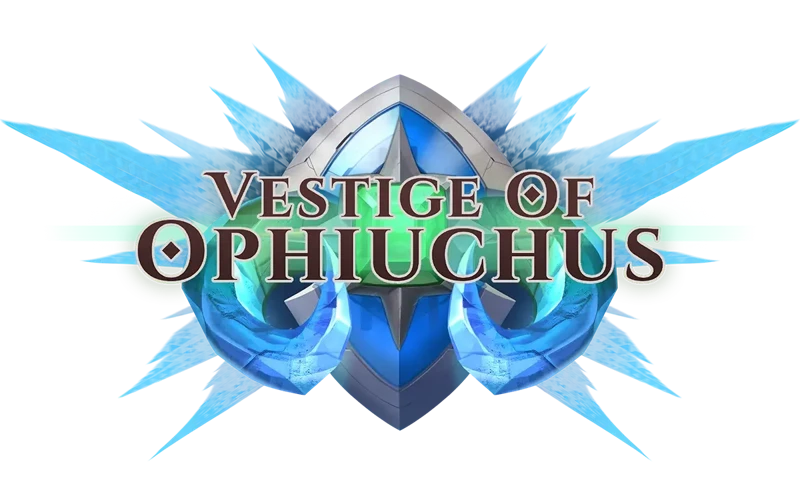
Within the realm of Japanese mythology, a vast array of mysterious spirits and creatures known as yōkai hold a significant place. These supernatural beings embody the inexplicable and supernatural aspects of the world, ranging from mischievous tricksters to vengeful entities. One such yōkai is the infamous oni, demonic creatures often depicted with horns and fierce expressions. Legend has it that oni were once human, transformed into malevolent beings due to their wicked deeds. These fearsome creatures serve as a cautionary tale, reminding people of the consequences of immoral actions. Nekomata, on the other hand, are supernatural cats with remarkable powers. These yōkai possess the ability to shape-shift and manipulate their environment, often associated with magical prowess and otherworldly abilities. A particularly fascinating yōkai is the jorōgumo, a mythical creature that takes the form of a beautiful woman and lures unsuspecting victims into her web. These mysterious spirits, with their diverse characteristics and captivating tales, continue to mesmerize and intrigue people to this day, having also made their way into various forms of popular culture. From folktales passed down through generations to modern-day portrayals in manga and anime, the fascinating yōkai of Japanese mythology offer a glimpse into the enigmatic realm of the supernatural.
Oni: The Demonic Creatures
Oni, the demonic creatures of Japanese mythology, are deeply ingrained in the cultural fabric as menacing entities associated with chaos and evil. These formidable beings are often depicted as hulking, ogre-like creatures with fierce expressions and sharp horns protruding from their foreheads. Oni are known to possess immense strength and are often seen wielding large iron clubs, known as kanabo, which they use to strike fear into the hearts of mortals. They are believed to dwell in hellish realms or remote mountain areas, and their presence is often associated with natural calamities and disasters. Oni are commonly depicted with vividly colored skin, typically ranging from deep blue to fiery red, symbolizing their otherworldly nature. In folklore, they are often portrayed as antagonists, tormenting humans and spreading misfortune. Legends tell of brave heroes who dared to confront these fearsome creatures, showcasing the ongoing struggle between good and evil in Japanese mythology./explore-zodiacs-newest-member-unveiling-origin-ophiuchus/
Nekomata: The Supernatural Cats
Nekomata, the supernatural cats of Japanese folklore, are fascinating and mysterious creatures believed to possess supernatural powers. These feline beings are often depicted as ordinary domestic cats with a distinctive split tail, symbolizing their transformation from an ordinary cat into a powerful yokai. Nekomata were believed to possess the ability to shape-shift and manipulate the spirits of the dead. Legends tell of Nekomata communing with the spirit world and using their powers to control and manipulate objects and people. They were often associated with dark magic and were believed to bring misfortune and death to those who crossed their paths. In some stories, Nekomata were said to have the power to possess and control dead bodies, using them as puppets to exact revenge or fulfill their desires. Despite their potentially sinister nature, Nekomata were also occasionally seen as protectors of their households and were revered as guardians against evil spirits. The tales of Nekomata highlight the deep reverence and simultaneous fear that cats held in Japanese culture, with their enigmatic and unpredictable nature captivating the imagination of storytellers for centuries.
Jorōgumo: The Spider Woman
Jorōgumo is a fascinating creature from Japanese mythology, known as the Spider Woman. In legend, Jorōgumo is depicted as a shape-shifting yokai, often taking the form of a beautiful woman to lure unsuspecting men into her web. She is said to inhabit forests and mountains, patiently awaiting her next victim. Once entrapped, Jorōgumo reveals her true spider form and feeds upon her prey. However, there is more to her story than meets the eye. In some tales, Jorōgumo develops genuine feelings for the humans she ensnares, leading to complex and tragic love stories. These stories explore the conflict between her insatiable predatory nature and the emotions that awaken within her. Jorōgumo exemplifies the dangerous allure of the supernatural, blurring the lines between desire and danger, beauty and deception. Her tale serves as a cautionary reminder of the mysterious and unpredictable forces that exist in the world, even in the form of a seemingly enchanting woman who is, in reality, a creature of the night. To unravel the mythical tales of Jorōgumo is to delve into the depths of human desires and the consequences that may arise when they intertwine with the supernatural.
Heroes and Heroines
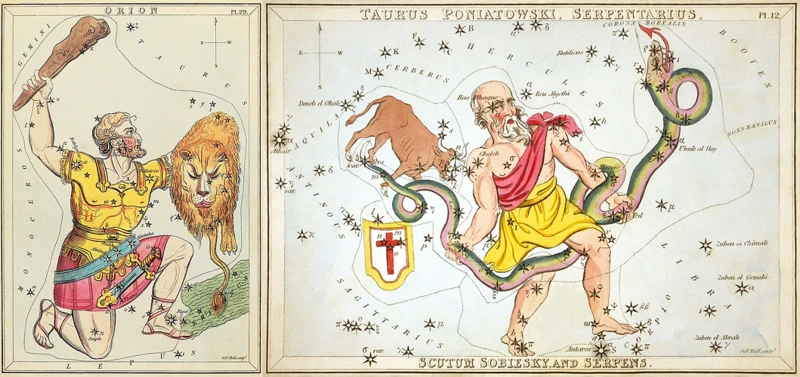
Heroes and heroines play a central role in Japanese mythology, with their courageous deeds and noble character traits inspiring generations. One notable tale is the legendary battle of Susanoo, the storm god, against the fearsome serpent Orochi. In this story, Susanoo comes to the aid of a family whose daughters have been sacrificed to the monstrous creature. With his cunning and strength, he slays Orochi, rescuing the girls and bringing peace to the land. Another well-known figure is Princess Kaguya, believed to be the Moon Princess. She was found as a baby inside a glowing bamboo stalk and raised by a bamboo cutter and his wife. Princess Kaguya captivated all who saw her with her ethereal beauty, but she eventually revealed her true origins and had to return to her celestial home. Her tale is one of longing, sacrifice, and the transient nature of beauty. Finally, there is the heroic prince Yamato Takeru, often referred to as Japan’s first samurai. Known for his bravery, he embarks on numerous quests and battles, defending his people and conquering his enemies. Yamato Takeru’s tales highlight the virtues of loyalty, resilience, and honor that are deeply valued in Japanese culture. These stories of heroes and heroines continue to inspire and captivate audiences, reminding us of the timeless appeal of bravery and the pursuit of justice.
Susanoo Battles Orochi
Susanoo, the impetuous storm god and younger brother of the sun goddess Amaterasu, is known for his epic battle against the fearsome eight-headed serpent, Orochi. As the story goes, Susanoo encountered an ancient village that was plagued by Orochi’s relentless hunger. Determined to save the people, Susanoo struck a deal with the village chief to marry his daughter, Kushinada-hime, in exchange for his help in defeating the monstrous serpent. With his plan in motion, Susanoo devised a clever strategy. He prepared eight giant barrels of sake and placed them around the village, enticing Orochi to drink his fill. As the serpent became intoxicated, Susanoo seized the opportunity and attacked, swiftly decapitating each of Orochi’s heads. In the final head, he discovered the legendary sword, Kusanagi-no-Tsurugi, which he presented as a gift to Amaterasu. This thrilling tale showcases Susanoo’s bravery and wit in vanquishing a terrifying foe, while also introducing significant artifacts that would become pivotal in subsequent Japanese mythology.
Princess Kaguya and the Moon
Princess Kaguya, also known as Kaguya-hime or The Bamboo Cutter’s Daughter, is a legendary figure in Japanese mythology whose tale revolves around the enchanting connection between the mortal world and the celestial realm. According to the legend, an elderly bamboo cutter discovered a glowing bamboo stalk from which emerged a tiny girl. Impressed by her radiance and beauty, he and his wife decided to raise her as their own child. As Kaguya grew older, her extraordinary charm attracted many suitors, including noblemen and even the Emperor himself. However, Kaguya rejected their advances, revealing that she was a celestial being sent from the Moon to experience life on Earth. Unable to defy her true nature, she longed to return home. The Moon people, aware of her desire, ultimately came to take her back to her celestial origins. Princess Kaguya’s story is one of love, sacrifice, and the longing for a place beyond the mortal realm, serving as a reminder of the ephemeral nature of human existence and the yearning for a celestial home. The tale of Kaguya continues to captivate audiences through various adaptations, including films, literature, and theater, showcasing the enduring appeal of this celestial enigma.
Yamato Takeru: The Heroic Prince
Yamato Takeru, the legendary heroic prince of Japanese mythology, is a prominent figure known for his courage, strength, and determination. Born as the son of Emperor Keiko, Yamato Takeru’s destiny was marked by his incredible feats and his quest to protect the land. One of his most renowned adventures was the defeat of the eight-headed serpent, Yamata no Orochi. With the guidance of the deity, Susanoo, Yamato Takeru embarked on this perilous mission. Armed with the sword Kusanagi, he infiltrated the beast’s lair and cunningly lured it into intoxication by placing bowls of sake at each of its heads. Taking advantage of the serpent’s weakened state, Yamato Takeru swiftly attacked and slayed the fearsome creature, rescuing the princesses who were to be sacrificed. This heroic act solidified his reputation as a legendary figure and a symbol of bravery. However, despite his valor, Yamato Takeru ultimately met a tragic end. As he journeyed through harsh lands during a military campaign, he fell victim to treachery and was ultimately consumed by a divine storm. Thus, the life of Yamato Takeru serves as a testament to the triumphs and tragedies of Japanese mythology, reminding us of the complex nature of heroism and the inevitable forces of fate.
The Tale of Genji
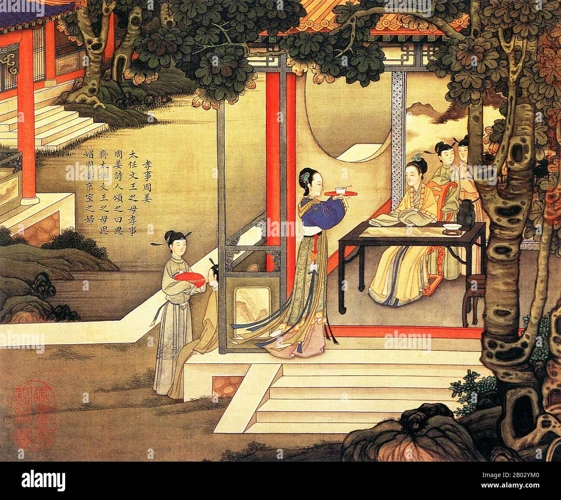
The Tale of Genji, often hailed as the world’s first novel, is a literary masterpiece that has captured the hearts and imaginations of readers for centuries. Written by the noblewoman Murasaki Shikibu during the Heian period (794-1185), this sprawling epic follows the life and romantic exploits of Prince Genji, a charming and charismatic nobleman. Set in the imperial court of Kyoto, the narrative weaves a complex tapestry of love, beauty, social intricacies, and sorrow. Prince Genji, known for his exceptional beauty, becomes enamored with numerous women throughout the tale, leading to intricate webs of desire, jealousy, and heartbreak. Each encounter is intricately described, capturing the nuanced emotions and societal expectations of the Heian court. The novel offers a captivating glimpse into the aristocratic lifestyle of the time, exploring themes of love, power, and the transient nature of human existence. With its poetic prose and vivid character portrayals, The Tale of Genji has left an indelible mark on Japanese literature and continues to be a cherished cultural treasure.
The Life of Prince Genji
In the ancient Japanese epic novel “The Tale of Genji,” the life of Prince Genji unfolds against the backdrop of the Heian period. Born to an emperor and a low-ranking concubine, Genji faces numerous trials and triumphs throughout his life. Renowned for his extraordinary beauty and charm, he captivates the hearts of many women, even becoming involved with multiple love affairs. Despite facing political intrigue and familial challenges, Genji’s charisma and intelligence help him navigate the complexities of the court. However, his life is not without tragedy, as he grapples with the loss of loved ones and the consequences of his actions. This intricate tale of love, longing, and societal expectations showcases the intricacies of courtly life during the Heian period, providing a poignant reflection on human desires and the fleeting nature of happiness.
The Romance and Tragedy of Genji
“The Romance and Tragedy of Genji” is an iconic tale from Japanese literature that has captured the hearts of readers for centuries. Written by Murasaki Shikibu in the 11th century, “The Tale of Genji” follows the life and experiences of Prince Genji, a charismatic and complex protagonist. Genji is portrayed as a handsome and talented nobleman, constantly entangled in romantic affairs and passionate relationships. The novel explores themes of love, desire, and courtly etiquette within the Heian period, offering a glimpse into the intricate social structures and customs of the time.
One of the most poignant relationships in the story is Genji’s love for Lady Fujitsubo, his father’s wife and his own stepmother. This forbidden romance embodies the complexities of desire and the conflicts arising from societal expectations. Genji’s adoration for Lady Fujitsubo drives his actions and fuels the narrative’s emotional turmoil.
The tragic elements of the story culminate in the death of Genji’s beloved wife, Lady Murasaki. This devastating event sends Genji into a state of profound grief, prompting him to withdraw from the world and contemplate the futility of life. The tale confronts themes of mortality, impermanence, and the fleeting nature of human existence.
“The Tale of Genji” is not only a tale of love and tragedy, but it also offers deep insights into the cultural milieu of the Heian period. It delves into the intricacies of courtly rituals, the hierarchical structure of society, and the expectations placed on individuals based on their social status.
This timeless masterpiece continues to captivate readers with its poetic prose, intricate character development, and exploration of the human condition. It serves as a reminder of the universal nature of love, the complexities of relationships, and the inevitability of sorrow in the course of one’s life.
Beliefs and Rituals

Beliefs and rituals are deeply ingrained in the fabric of Japanese society, with Shintoism standing as the indigenous religion and Buddhism exerting a significant influence as well. Shinto, meaning “the way of the gods,” is a polytheistic belief system centered around the veneration of kami, divine spirits believed to inhabit all aspects of nature. Shinto rituals often involve purification ceremonies, shrine visits, and the offering of prayers and symbolic objects. Many Japanese people consult omikuji, paper fortunes, to seek guidance or visit specific shrines during certain times of the year to participate in festivals like Hatsumode, the first shrine visit of the New Year. Buddhism, introduced to Japan in the 6th century, brought with it a distinct set of practices, such as meditation, chanting, and the construction of elaborate temples. Over time, Shinto and Buddhism intertwined, leading to the development of syncretic beliefs and rituals. These syncretic practices can be observed in events like Obon, a festival honoring the spirits of ancestors, which combines Buddhist teachings with ancestral reverence. Today, many Japanese people seamlessly blend elements of Shinto and Buddhism in their spiritual lives, demonstrating the harmonious coexistence of these two religious traditions in Japan.personal lucky numbers
Shinto: The Indigenous Religion
Shinto, meaning “the way of the gods,” is the indigenous religion of Japan. Rooted deep in the country’s culture and history, Shinto is a belief system that reveres and honors the kami, the divine spirits or deities that exist in nature, ancestors, and various objects. It is a religion that highlights the harmonious relationship between humans and the natural world, emphasizing the sacredness of all things. Shinto rituals and ceremonies are performed to express gratitude, seek blessings, and purify the soul. Shrines, known as jinja, are central to Shinto practices, serving as spaces where people can connect with the divine. Spirituality in Shintoism permeates daily life, with respect for nature and ancestral traditions being pivotal. It influences various aspects of Japanese culture, such as festivals, art, architecture, and even the concept of national identity. The cultural and spiritual significance of Shinto continues to be celebrated across Japan, showcasing the deep-rooted connection between the people, their land, and the divine forces that shape their lives.
Buddhism’s Influence on Mythology
Buddhism, introduced to Japan in the 6th century CE, had a profound impact on Japanese mythology, intertwining with existing indigenous beliefs and shaping the way stories were interpreted and transmitted. As Buddhism gained popularity, its influence began to blend with the native Shinto religion, resulting in a unique syncretic tradition known as “Buddhist Shinto.” One significant way in which Buddhism influenced Japanese mythology was through the introduction of new deities and concepts. Buddhist deities such as Amida, Kannon, and Jizo became integrated into the pantheon of Japanese gods, coexisting alongside traditional Shinto kami. These deities brought with them their own myths and legends, enriching the tapestry of Japanese mythology. Buddhist ideas of karma and rebirth also found their place in the storytelling, adding a philosophical depth to the tales. Another intriguing aspect of Buddhism’s influence was the transformation of certain mythical figures. For example, the thunder god Raijin, originally a fearsome deity, came to be depicted as a guardian of Buddhist temples. Additionally, Buddhist concepts like the Pure Land and the cycle of samsara influenced the depiction of the afterlife and the journey of souls in Japanese mythology. This blending of beliefs created a complex and fascinating mythology that continues to evolve to this day. To explore more about the interaction between Buddhism and mythology, you can read our article on musical collaborations and the harmonious melding of talents that transcends cultural boundaries.
Japanese Mythology in Popular Culture
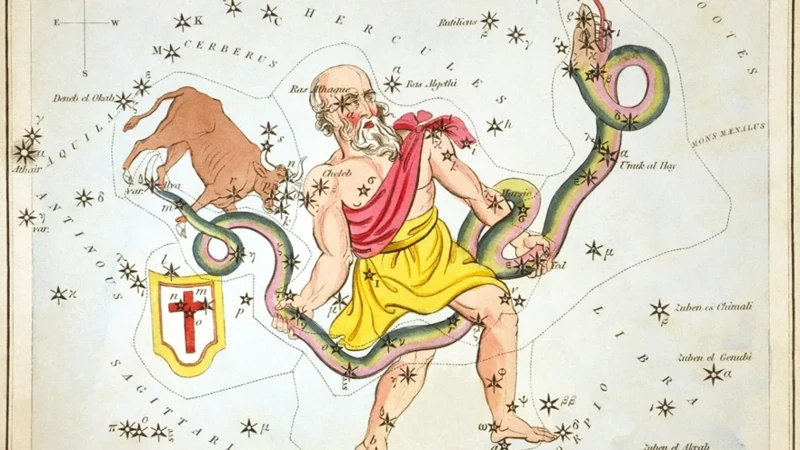
Japanese mythology has made a profound impact on popular culture, both in Japan and around the world. Its influence can be seen in various forms of media, including manga, anime, video games, and films. One of the most notable examples is the prevalence of mythical creatures and deities as characters in manga and anime. From the mischievous Kitsune to the powerful Tengu, these mythical beings have become beloved and iconic figures in Japanese pop culture. Additionally, many popular anime series draw inspiration from ancient legends and incorporate elements of Japanese mythology into their storylines. In the world of video games, developers often incorporate mythical creatures and themes into their gameplay, creating immersive and captivating experiences. Films, both live-action and animated, also frequently explore Japanese mythology, bringing these ancient tales to life on the big screen. This widespread integration of Japanese mythology in popular culture serves to both entertain and educate audiences, ensuring that these captivating legends continue to endure and inspire new generations. Whether it’s experiencing the adventures of mythical heroes or delving into the supernatural realm of yōkai, the influence of Japanese mythology in popular culture is undeniable.
Manga and Anime
Manga and anime have become integral parts of Japanese pop culture, and their influence on global entertainment cannot be overstated. Manga refers to the Japanese comic books or graphic novels, while anime refers to animated TV series and films. These mediums have brought Japanese mythology to life in vibrant and imaginative ways, capturing the hearts of audiences worldwide. Many popular manga and anime series draw inspiration from traditional Japanese folklore and mythological creatures, incorporating them into captivating narratives filled with adventure, magic, and epic battles. From the fantastical worlds of Studio Ghibli films like “Spirited Away” and “Princess Mononoke” to the action-packed storylines of manga series like “Naruto” and “Bleach,” Japanese mythology permeates the pages and screens, captivating fans with its rich tapestry of supernatural beings and captivating stories. The enduring popularity of manga and anime has not only helped to preserve and celebrate Japanese mythology but has also propelled it into the global mainstream, ensuring its legacy transcends time.
Video Games and Films
The influence of Japanese mythology can be seen in various forms of popular culture, particularly in the realms of video games and films. Many game developers and filmmakers have drawn inspiration from the rich tapestry of Japanese mythology to create captivating and immersive experiences. In the realm of video games, titles such as “Okami” and “Ōkami” pay homage to the folklore and legends of ancient Japan. These games allow players to embody a wolf goddess and embark on a quest to restore balance and harmony to the land, utilizing supernatural abilities and interacting with mythical creatures along the way. Another notable example is the “Shin Megami Tensei” series, which explores themes of demons and deities from Japanese folklore, incorporating them into a modern urban setting. This franchise has gained a dedicated following for its complex narratives and compelling characters, as well as its incorporation of mythological elements. When it comes to films, renowned Japanese director Hayao Miyazaki has masterfully weaved mythology into his works, such as “Princess Mononoke” and “Spirited Away.” These films transport viewers into enchanted worlds filled with magical beings and supernatural occurrences, showcasing the beauty and wonder found in Japanese folklore. The enduring presence of Japanese mythology in video games and films allows audiences to become immersed in these captivating stories and experience the rich cultural heritage of Japan firsthand.
Conclusion
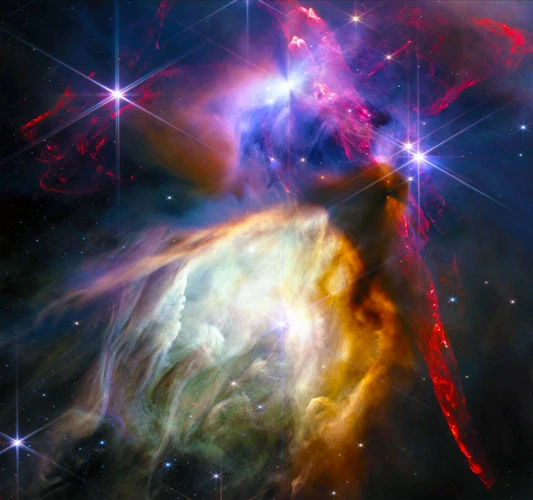
In conclusion, the legends of Japanese mythology continue to captivate and inspire people around the world. These ancient stories have left an indelible mark on Japanese culture, shaping beliefs, rituals, and even popular culture. From the creation myth that depicts the birth of the deities and the world, to the tales of heroic figures like Susanoo and Yamato Takeru, Japanese mythology is a rich tapestry of imagination and symbolism. The mythical creatures, such as the mischievous Kitsune, the enigmatic Kappa, and the fearsome Tengu, add an element of mystery and wonder to the folklore. The supernatural beings known as yōkai, including the demonic Oni, the shape-shifting Nekomata, and the seductive Jorōgumo, continue to intrigue and fascinate. The influential Tale of Genji paints a vivid picture of courtly life and the complexities of human emotions. The synthesis of Shinto and Buddhism further adds depth to these mythological tales, creating a unique religious and cultural fusion. Furthermore, Japanese mythology has left an indelible mark on popular culture, with references and adaptations present in manga, anime, video games, and films. The enduring appeal of these myths lies in their ability to tap into the universal human experiences of love, loss, heroism, and the eternal struggle between gods and mortals. As we delve into the legends of Japanese mythology, we are transported to a world where imagination knows no bounds, and the limitless possibilities of storytelling come to life.
Frequently Asked Questions
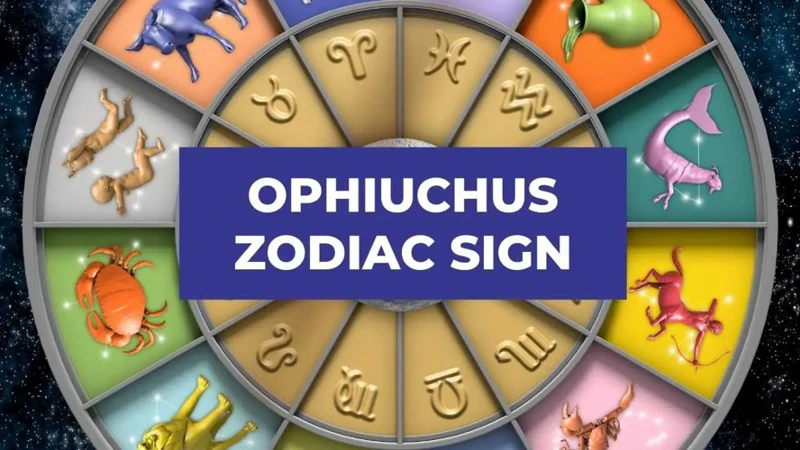
1. What is the significance of the creation myth in Japanese mythology?
The creation myth holds great importance as it explains the origins of the world, the birth of deities, and the formation of Japan itself. It highlights the balance between creation and destruction and serves as a foundation for understanding the cycle of life.
2. Who are Izanagi and Izanami?
Izanagi and Izanami are divine siblings in Japanese mythology who were tasked with creating the land and giving birth to deities. They are considered the progenitors of the Japanese archipelago and played a crucial role in the formation of the world.
3. What happened during Izanagi’s journey to the underworld?
During Izanagi’s journey to the underworld, he hoped to bring his deceased wife, Izanami, back to the world of the living. However, upon seeing her rotting corpse, he was filled with terror and fled, ultimately sealing the entrance to the underworld, never to see Izanami again.
4. Can you explain the concept of yin and yang in Japanese mythology?
In Japanese mythology, the concept of yin and yang, known as “In” and “Yo,” represents the duality and complementary nature of the world. It signifies the balance between opposite forces, such as creation and destruction, light and darkness, and male and female.
5. What are yōkai in Japanese mythology?
Yōkai are mysterious spirits or supernatural creatures in Japanese folklore. They can be mischievous, malevolent, or benign and come in various forms, ranging from animals and humans to supernatural beings like ghosts and demons.
6. Who is Susanoo and what is his significance?
Susanoo is a powerful Shinto deity known as the god of sea and storms. He plays a prominent role in Japanese mythology, including his battles against the eight-headed dragon Orochi and his role in bestowing gifts upon his sister, Amaterasu, the sun goddess.
7. What is the story of Princess Kaguya and the Moon?
The story of Princess Kaguya revolves around a mysterious girl found inside a glowing bamboo stalk. As she grew up, many suitors tried to win her hand, but she revealed herself to be a celestial being from the moon. The story explores themes of love, sacrifice, and the fleeting nature of beauty.
8. How did Buddhism influence Japanese mythology?
When Buddhism arrived in Japan, it assimilated with existing mythological beliefs, creating a syncretic relationship. Buddhist concepts and deities blended with traditional Japanese folklore, introducing new elements and influencing the way people mythologized certain figures and events.
9. What role do mythical creatures like kitsune and kappa play in Japanese mythology?
Kitsune, the mythical fox, and kappa, the water imps, are popular creatures in Japanese mythology. Kitsune are known for their shape-shifting abilities and their cunning nature, while kappa are often depicted as mischievous tricksters inhabiting rivers and ponds.
10. How are Japanese mythological themes represented in popular culture today?
Japanese mythology continues to be a rich source of inspiration in popular culture, particularly in manga, anime, video games, and films. These mediums often adapt and reimagine the stories, characters, and creatures from Japanese mythology, introducing them to new audiences and keeping the legends alive.
References
- A fascinating introduction to Japanese mythology, myths …
- A fascinating introduction to Japanese mythology, myths …
- Japanese Mythology: A Fascinating Introduction to …
Frequently Asked Questions

1. Who were Izanagi and Izanami?
Izanagi and Izanami were the divine couple in Japanese mythology who were responsible for creating the islands of Japan and the deities that inhabited them.
2. What is the significance of Amaterasu and Susanoo?
Amaterasu is the sun goddess and Susanoo is the god of storms and the sea. Their relationship is filled with conflict and represents the balance between light and darkness, order and chaos.
3. What are Kitsune and why are they fascinating?
Kitsune are mythical foxes in Japanese folklore known for their shape-shifting abilities and intelligence. They are associated with both good and mischievous behavior, making them intriguing creatures in Japanese mythology.
4. Can you tell me more about Kappa and their origins?
Kappa are water imps or river spirits in Japanese mythology. They are often depicted as mischievous creatures with a water-filled cavity on the top of their heads. Their origins trace back to ancient beliefs about water and the dangers it posed.
5. What is the story behind Tengu, the winged goblins?
Tengu are supernatural creatures in Japanese folklore with both human and bird-like features. They are often portrayed as tricksters or protectors, and their origins can be traced back to ancient beliefs about spirits inhabiting mountains and forests.
6. What are Oni and what role do they play in Japanese mythology?
Oni are demonic creatures in Japanese folklore often depicted as ogre-like beings with horns and wild hair. They represent evil and are often associated with punishment and the underworld.
7. Tell me more about Nekomata, the supernatural cats.
Nekomata are shape-shifting cats in Japanese folklore. They are believed to have supernatural powers and are often associated with witchcraft and dark magic. They are intriguing creatures that have captivated people’s imaginations for centuries.
8. Who is Jorōgumo and what is her significance in Japanese mythology?
Jorōgumo is a mythical creature in Japanese folklore known as the “spider woman.” She is a shape-shifting spider who can transform into a beautiful woman. She is often depicted as a seductress who lures men into her web, symbolizing the dangers of temptation and deceit.
9. What is the story behind Susanoo battling Orochi?
The story of Susanoo battling Orochi is one of the most famous legends in Japanese mythology. Orochi is a fearsome eight-headed serpent that terrorizes a village, and Susanoo, the storm god, steps in to save the day. The story showcases bravery, divine intervention, and the triumph of good over evil.
10. Who is Prince Genji and why is his tale significant?
Prince Genji is a fictional character from the 11th-century Japanese novel “The Tale of Genji.” He is a complex and intriguing protagonist who embodies the ideals of beauty, romance, and courtly life. His tale is considered a masterpiece of Japanese literature and provides insights into the culture and society of the time.






